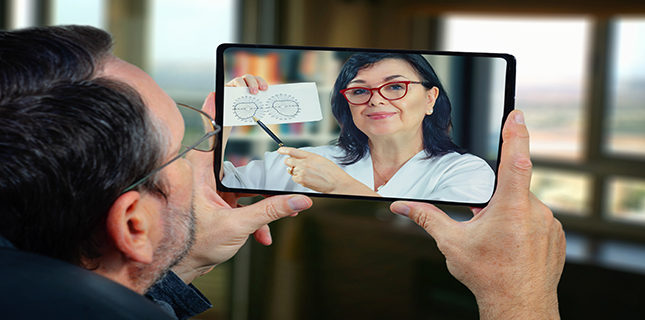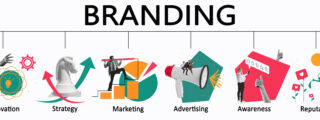
Tele…everything
On the one hand, COVID has created chaos, confusion, and devastating destruction. On the other, it has brought out the best in innovative thinking. At very least, it has caused everyone—including eyecare professionals—to rethink almost everything.
Tip: ODs are finding it’s good for things like contact lens follow-up, management of dry eye and allergies, as well as myopia management.
That’s certainly the case with industry organizations like the American Optometric Association. As AOA President William T. Reynolds, O.D., said last summer, “In 2019, the AOA and our industry partners began proactively reviewing and revising our 2017 policy statement on the appropriate use of telehealth in eye health and vision care. Together, we are setting the direction of responsible eye telehealth that delivers the highest standard of care.”
CHALLENGES
That likely dovetails with most ECPs’ thinking when it comes to integrating something like telehealth into a previously more traditional delivery system.
Some of the challenges? Staffing…when it comes to tele-services, how do you provide virtual styling when you need your opticians on the floor? Compliance…making sure you are utilizing a HIPAA-compliant platform and keeping abreast of any changing state regulations. And, almost everyone’s biggest nightmare, coding…which underscores how it really is a whole new world out there.
While telehealth can’t replace in-person visits for eye exams and many vision problems, ODs are finding it’s good for things like contact lens follow-up, management of dry eye and allergies, as well as myopia management.
OPPORTUNTIES
Like it or not, consumers have come to expect a continuation of at least some of what was set up in their ECP’s practice during closure. Given that exposure, patients are now more receptive to other virtual opportunities as well…something that can provide new revenue streams for your practice. These days, that can include virtual product recommendations and styling.
Some practices, for example, are doing virtual frame selection thanks to a variety of optical-specific programs as well as resources like Apple’s Face ID-enabling technology and a variety of virtual try-on technologies.
SATISFACTION
Consumers are definitely driving the ship here, and that’s true across the board. In a survey conducted by Massachusetts General Hospital, for example, 61% of patients reported the same level of care from telemedicine as from in-person visits. And 80% cited another plus—how much easier it is to schedule a telemedicine appointment than an in-person one.
That being said, tele services aren’t just changing the way some B-to-C (business-to-consumer) services are delivered. It’s also impacting B-B (business-to-business) in everything from sharing a through-the slit-lamp view with a colleague to working with labs.
RESOURCES
Things change, however, so it’s important to check, on an ongoing basis, with state, professional, and insurance resources. As you’ve probably already discovered, not everyone is on the same page.
While it can be cumbersome and confusing to wade through all the information, be sure someone on staff checks on a regular basis with sites such as:
• Centers for Medicare & Medicaid Services (CMS), https://www.cms.gov/Medicare/Medicare-General-Information/Telehealth/Telehealth-Codes
• The American Optometric Association (AOA), https://www.aoa.org/coronavirus/aoa-guide-to-telehealth-based-care-during-covid-19
• and The Vision Council. www.thevisioncouncil.org.
What telehealth services have you continued to offer patients in your practice? Have you introduced any new ones recently? Tell us about it and share in the conversation on Facebook here.
Comments are closed.







